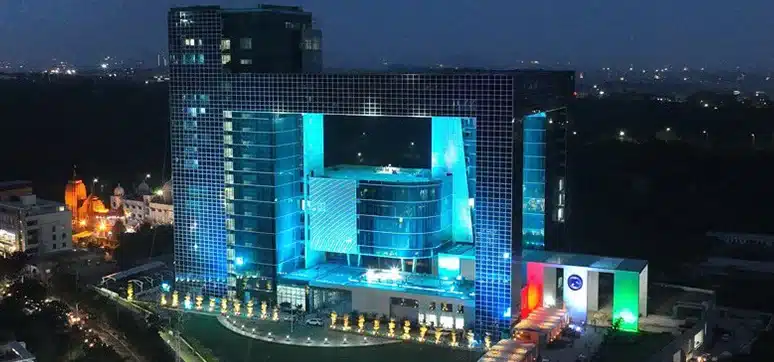In a conversation with Ar. Nitin Gupta, Director, ARCOP Associates on his journey as an architect, his associations with the legends of Indian architecture, his approach to design, Arcop’s recent projects in India and many other aspects. Here are the excerpts from the interview.
Could you tell us about your educational background, career and architectural experience? What inspired you to pursue a career in Architecture? Tell us about the turning point in your design career.
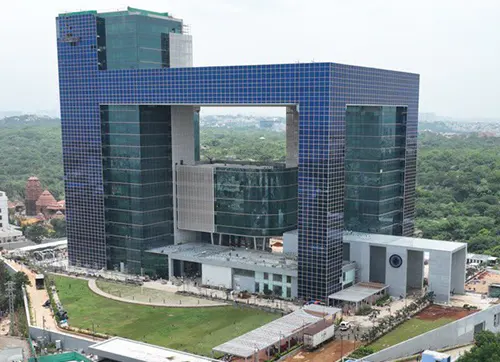
After my schooling, I took up architecture. I would say, my inspiration was my father. He was an architect and was running his own office. That is where my love for architecture began. At that time in Delhi, we just had only one institute teaching architecture – the School of Planning and Architecture (SPA), which is now an institute of national importance. I completed my B. Arch from SPA, Delhi in 1992. In SPA, I was fortunate to have very good teachers who were great architects. It is very normal for the son to join his father’s company and worked with my father for a few years. Later, I wanted to explore more and started working in some other offices. I remember that the first job I took was with an architect who was into mud and bamboo architecture. So that was purely for excitement and fun. I took up that job and did some very interesting work there.
Later, to learn mainstream architecture, I joined a renowned Indian architecture firm started by Ar. Joseph Allen Stein. Ar. Stein was an American, but he had spent most of his career and his life in India. He’s done some exemplary work including the India Habitat Centre, New Delhi (1993). I worked with him and his younger partners. That is where I got to learn the detailing. Stein’s office was known for its level of construction detailing that they used to do there.
My third job was at ARCOP Associates. I joined the design firm in 1995. Turning points in my career have been working for and with my principal, Ar. Ramesh Khosla, and then our other founder and director, Ar. Debasish Guha at Arcop. Both were from the School of Planning and Architecture. At both the offices (with Ar. Stein and Arcop) I had the opportunity to get involved in very large-scale projects. Now, at Arcop, we do a lot of urban designs. I think it has been a journey of evolution. It’s continuous learning even today.
What type of projects does ARCOP specialise in? What type of services do you offer to your clients?

Okay. Very interesting question. So let me answer it the other way around. I would say, what we don’t do is factories. Somehow that is the only building type Arcop hasn’t done yet, and the reason for this is it does not have a design input predominantly. Arcop specialises in comprehensive architectural services for large-scale projects. We do a lot of urban design. So the urban design has been my forte, and also for very large-scale architectural projects. We have done five-star hotels to high-end real estate projects ranging from condominiums to villas.
We have done 2 largescale, golf-themed townships, which are very high-end projects, large educational institutions, mega hospitals, etc. We have designed some of the most prestigious and premium healthcare institutes and hospitals in India. Arcop is a very old company. It was started way back in 1954 in Canada, in Montreal. I joined this company as a regular employee, and I would say, it is probably one of the most unique companies in India where it has operated like a professional or corporate organization. And today I am one of the most senior directors in the company; I have grown from being an employee to now as a director, virtually running the company, taking up one challenge after another. And that’s how we have evolved.
What is your take on sustainable practice in architecture today?
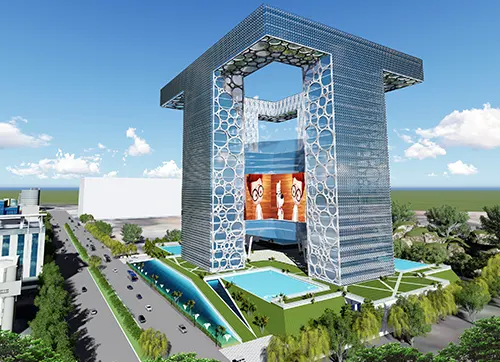
Sustainable practice in architecture today can only nurture out of a deep passion for work and enjoying the process of design and execution of the building. It is good that we have a very strong focus now on this aspect. Right from my college days, I was very concerned about energy issues, solar passive architecture, etc. So there was always an attempt to respect solar orientation, harnessing solar energy, climatic conditions, geography, etc. In the early stage itself, I realised that nothing more is sustainable than natural ventilation.
Why should you air condition if you can make a naturally cooled environment?
We Indians were practising energy-efficient, solar-oriented, and passive architecture, even from pre-historic times. And now it is at a very different level. I started proposing solar-Voltaics in my projects way back, maybe 15 years ago. It is highly feasible now with a payback within 5 years. Earlier it was used only on roofing, now we are integrating renewable energy on facades of large-scale projects like a hospital. Earlier we used to do it out of our passion. Right now we proposing renewable energy harvesting in most of our projects and are doing it in a more structured manner.
You have worked on a huge number of projects in all segments including healthcare, institutional, residential, commercial, hospitality, civic infrastructures, etc. How would you define your design process for façades and fenestrations in your projects, which are very different from each other?

The design of the façade and fenestration is an integral part of the architectural design of the building. In my opinion, there are no set patterns for the design. However, generally, we try to use façade materials that require less maintenance and have an inherent architectural character. Fenestrations should always be a true expression of the function inside the building.
In all my designs, as learned from Ar. Khosla or Stein, façade design is an integrated and holistic process. We never think of the façade and the building as separate entities in any project. The design concept for JP Palace Hotel in Agra was by Ar. Khosla and I became the lead architect for the project. The design inspiration came from the monument Taj Mahal and the complex was designed as a modern interpretation of the white Taj Mahal sitting amongst the red Sandstone buildings. Recently we finished four AIIMS projects. Here again, right from the beginning, we wanted to do a modern interpretation of the traditional.
In another project, which is golf villas, the approach is totally different, intending to give a 360-degree vision, so that inmates could enjoy the beautiful view of the golf course.

Another interesting project we are working on is the Image Tower, Hyderabad – a new icon for Telangana. It is an Incubator for the gaming and animation industry of Hyderabad and entire India, which is a big IT centre being developed by a private developer. The design is inspired by the iconic Charminar and its four towers but in a T shape. It will be carved out of a perfect cube of 100 m. The government wanted to do it like a PPP model. There are a few film studios and incubation facilities for the gaming and animation industry planned here.
The Information Technology University near Shimla in Himachal Pradesh tested my intellect at full capacity. The project is a shining example of an environmentally appropriate high-density project in the hills. Challenging contours of otherwise barren land has been converted into green forest cover and a lively campus with high-rise towers, the first of its kind in hills.
How did you arrive at the iconic design of the Police Headquarters in Hyderabad?
The idea for the Police Headquarters in Hyderabad was to build a futuristic building – as the information collection centre of the entire city that’s being networked by CCTV camera. A large video wall was part of the design of the police Headquarters so that the central command and all the 40-odd departments under it can keep an eye on all parts of the city. This was an exciting project as we wanted to make it something that is out of the world. We had prepared around 20 design options and this was our first major design challenge. The state government was asking us to make an icon.
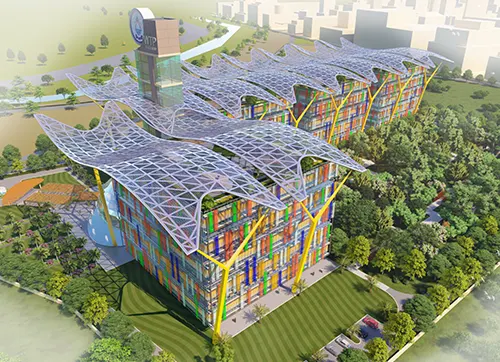
We looked at iconic high-rise buildings around the world and scientifically analysed them to know their values. We picked up buildings like the Shard in London that was recently completed; the Shanghai Tower, St Mary Axe designed by Norman Foster, etc. So all of these buildings were analysed literally on criteria as to what makes them iconic, what is the consistent thing in them that is making them more popular, etc. So symmetry became a kind of guiding principle. Innovation has become an urban symbol. Thus the iconic two-tower structure was planned for the police headquarters in Hyderabad. It’s a fantastic project and it’s good to know that even in India, some of the governments are interested in doing such projects with a lot of interest.
Please tell us about some of your most preferred façade materials.
My preferred facade material is natural sandstone dry cladding. Glass has become an integral material for facades. Along with glass, solid surfaces like natural stones, marble, etc. can be used, but we need to be mindful of the environmental issues. Reinforced concrete is also used widely for façades. One thing we realised was that glass is a very universal material and everyone is using a lot of glass. It is a very high-tech, modern expression, also it makes the building very light and increases the construction speed. There is a worry about maintenance when it comes to glass for some reason, like the dusty facades of Gurugram high-rise buildings. But when you look at buildings designed by Ar. Charles Correa, they still look very fresh. So as long as you can clean glass, and when there are systems for it, we need not worry.
Could you please brief me on the latest trends in façade and fenestration designs and technologies?

The latest trends in facades are to mimic natural materials in manufactured materials and that is improving every day. We have used sandstone in many of our projects – for example, in the hotel project, the Jaypee Palace Hotel at Agra. Granite cladding is done on one of the office projects in Delhi. But the trend is to use materials that are inherently light since they are most suitable for high-rise buildings. Glass is the best material considering this. But It is a challenge to use glass in a hot climate with strong sun. We can use a second layer of glass for the facades facing the sun.
Facades become an architectural expression through the use of different colours, textures and forms. The sun’s rays pass through the glass and the short waves get converted into long waves. The heat gets trapped inside. But if you can put another layer of glass, it just stays out. Through this trick, just by putting two layers of glass, one can connect outside and have a great view, but at the same time keep the heat away. It’s like wearing sunglasses. Solar studies are done and as per the studies, glass facades are placed and treated. In the AIIMS Delhi project too we have done sun path diagram studies. Revit and SketchUp tools were used for simulation studies, visible light transmission versus the shading coefficient, etc. Another very interesting aspect is that we also wanted to harvest daylight because these were public buildings, academic buildings.
Please throw some light on a few of your milestone projects.

Residential condominium projects have always been Arcop’s forte. Arcop designed the first condominium in Gurgaon called The Garden Estate. In the late nineties, we completed The Laburnum Housing, which still is one of the most sculptural high-rise condominiums in Gurgaon. Henceforth, we have set out to create some fantastic Golf based real estate projects like the Jaypee Greens in Greater Noida. Tell us about some of your most challenging projects.
Creating signature buildings for different state governments in their capital cities has been a very interesting challenge. IAS Academy in Lucknow, Police Headquarters in Hyderabad and WTC, Guwahati are a few challenging projects.
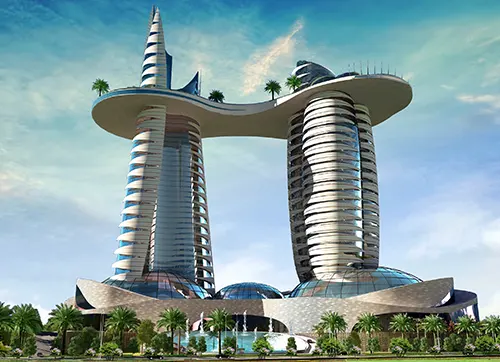
What is the signature style of your projects? How do you make sure that your project designs are unique and sustainable?
Signature style comes from a deep desire to discover new thoughts and ideas with each design challenge. Sustainability comes from a deep knowledge base and a strong desire to integrate and implement it in the design.
What is your idea or views on the façades of the future? What features would you like to see in future facades?
The future of the facade is dynamic facades that change with time. Biophilic architecture with living horticulture will be a very sustainable and appropriate future for facades.
What is your advice to young and upcoming architects?
My advice to young and upcoming architects is to try to be always young and hungry for new ideas and thoughts. Keep surprising your clients each time you meet them for new work and repeat work. Passion for architecture is what drives all of us to come up with our best projects. Architecture is all about surprising yourselves and your clients and then coming up with continuously reinventing. So be passionate, learn and reinvent.
